Walter Duncan ARWS | |
|---|---|
| Born | 3 December 1847 Hampstead Road, London, England |
| Died | 1932 Richmond, London, England |
| Nationality | English |
| Known for | Painting |
Walter Duncan (1847-1932) ARWS was a British painter and watercolorist.
Contents

Walter Duncan ARWS | |
|---|---|
| Born | 3 December 1847 Hampstead Road, London, England |
| Died | 1932 Richmond, London, England |
| Nationality | English |
| Known for | Painting |
Walter Duncan (1847-1932) ARWS was a British painter and watercolorist.


Walter Duncan was born in London in 1847 to the Royal Academy artist Edward Duncan RWS and his wife Berthia, the daughter of British marine painter William John Huggins. His older brother was the artist Allan Duncan (1844-1925). Walter Duncan studied at the Heatherley School of Fine Art before entering the Royal Academy Schools. In 1874 he was elected an Associate of the Royal Watercolour Society [1] and his paintings from then on bear the initials A.R.W.S. beneath his signature. [2] Although principally a watercolourist - he exhibited 224 paintings at the RWS - Walter Duncan also painted in oils, though examples are rare.
In 1871 he married Harriet Charlotte Condy (1846-1880), the daughter of the painter Nicholas Matthews Condy. In 1883, after her death, he married Elizabeth Sophia Anne Haase Child Gascoyne, the daughter of an officer stationed in the North-Western Provinces. This led to a two-year stay in India. [1]
Between 1869 and 1893 Duncan exhibited at the Royal Academy, the Royal Society of British Artists, the Grosvenor Gallery, the New Gallery, and the Royal Watercolour Society. From the 1870s he was also one of the principal artists of The Illustrated London News. He died in Richmond, London in 1932.

Frank Cadogan Cowper was an English painter and illustrator of portraits, historical and literary scenes, also described as "The Last Pre-Raphaelite".

Dame Elizabeth Violet Blackadder, Mrs Houston, was a Scottish painter and printmaker. She was the first woman to be elected to both the Royal Scottish Academy and the Royal Academy of Arts.

Sir George Clausen was a British artist working in oil and watercolour, etching, mezzotint, drypoint and occasionally lithographs. He was knighted in 1927.

The Royal Watercolour Society is a British institution of painters working in watercolours. The Society is a centre of excellence for water-based media on paper, which allows for a diverse and interesting range of approaches to the medium of watercolour. Its members, or associates, use the post-nominal initials RWS and ARWS. They are elected by the membership, with typically half a dozen new associates joining the Society each year.
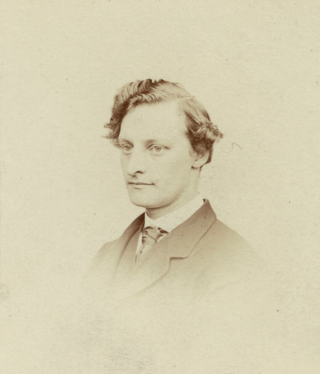
Edward Robert Hughes was a British painter, who primarily worked in watercolours, but also produced a number of oil paintings. He was influenced by his uncle and artist, Arthur Hughes who was associated with the Pre-Raphaelite Brotherhood, and worked closely with one of the Brotherhood's founders, William Holman Hunt.
Henry Brittan Willis was an English landscape and animal painter.
Mildred Anne Butler was an Irish artist, who worked in watercolour and oil of landscape, genre and animal subjects. Butler was born and spent most of her life in Kilmurry, Thomastown, County Kilkenny and was associated with the Newlyn School of painters.

Edward Brian Seago, RBA, ARWS, RWS was an English artist who painted in both oils and watercolours.
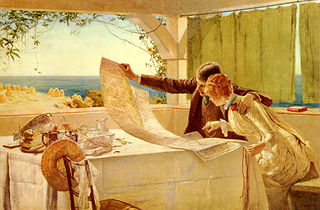
Edward Frederick Brewtnall was a British genre, landscape and figure painter and illustrator.
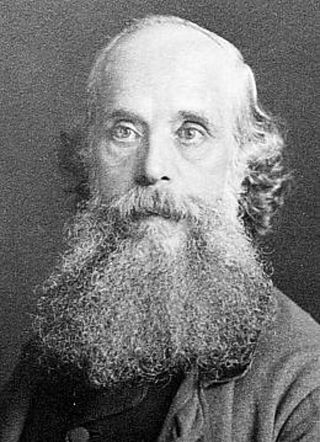
Alfred Walter Williams was an English landscape painter during the Victorian era, and a member of the Williams family of painters.

Edward Angelo Goodall was a British landscape and orientalist painter, a member of the Goodall family of artists.
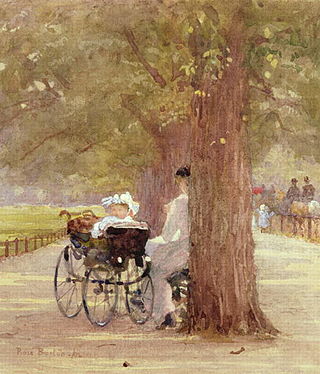
Rose Mary Barton was an Anglo-Irish artist; a watercolourist who painted landscape, street scenes, gardens, child portraiture and illustrations of the townscape of Britain and Ireland. Barton exhibited with a number of different painting societies, most notably the Watercolour Society of Ireland (WCSI), the Royal Academy (RA), the Royal Hibernian Academy (RHA), the Society of Women Artists and the Royal Watercolour Society (RWS). She became a full member of the RWS in 1911. Her paintings are in public collections of Irish painting in both Ireland and Britain, including the National Gallery of Ireland and Dublin City Gallery The Hugh Lane in Dublin, and the Ulster Museum in Belfast.

Katharine Cameron RWS RE was a Scottish artist, watercolourist, and printmaker, best known for her paintings and etchings of flowers. She was associated with the group of artists known as the Glasgow Girls.

Edward Duncan was a British watercolourist known for his depictions of coastal views and shipping. He was a member of the Royal Watercolour Society and received Royal patronage from Queen Victoria.
Richard Sorrell is a British artist working in oil acrylic. He now lives in Cornwall.
Diana Maxwell Armfield is a British artist. She is known for landscapes, and has also painted portraits, literary subjects and still lifes. She has a particular interest in flower paintings, and is considered to owe much to the Sickert tradition. She studied at the Slade School of Fine Art and the Central School of Arts and Crafts. Armfield was elected as a Royal Academician in 1991.
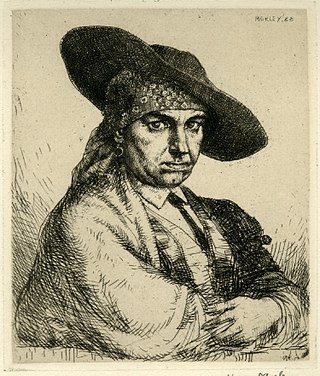
Harry Morley was a British painter, etcher and engraver known for his classical and mythological compositions.
Minnie Smythe (1872–1955) was a British landscape watercolourist. Her paintings often depicted the figures and countryside of the Pas-de-Calais region of France.

Simon Carter is an English artist and curator.

Samuel John Hodson was a British watercolour artist who mainly produced landscape paintings of European towns and buildings with figures. He was a member of the Royal Watercolour Society.
WRIGIT Christopher, GORDON Catherine Mary, SMITH Mary Peskett (2006), “Walter Duncan”, in IDEM British and Irish Paintings in Public Collections, New Haven 2006, Yale University Press, p. 310.